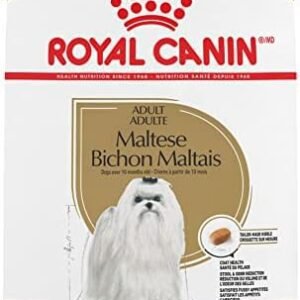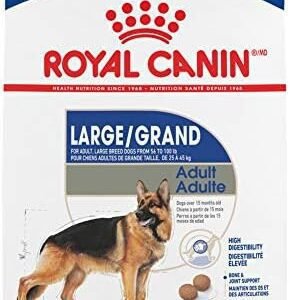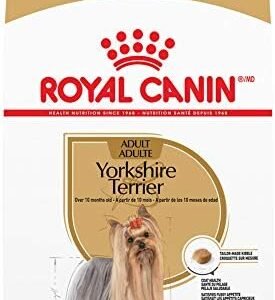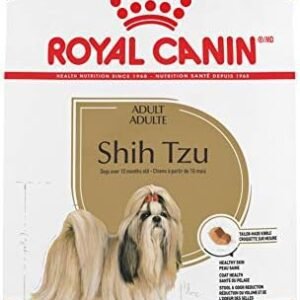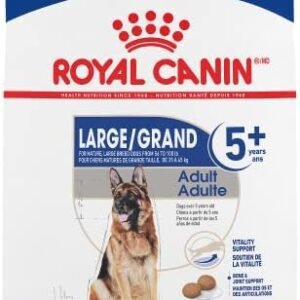Have you ever wondered if your canine companion can share your love for green peppers? You might be surprised to learn that green peppers are one of the most intriguing foods in the world. But can your furry friend enjoy this vibrant, crunchy treat as well?
In this article, we will delve into the fascinating world of canine cuisine to answer the burning question: Can dogs eat green peppers? Our pets are not just family members; they’re our confidants, playmates, and loyal companions. As responsible pet owners, it’s crucial to be informed about what human foods are safe for our four-legged friends.

Join us on this culinary journey where we will explore the pros and cons of incorporating green peppers into your dog’s diet. Discover how much is just right and what to do if your dog happens to nibble on a part of a green pepper that isn’t considered edible or safe for dogs. Your dog’s well-being is paramount, and by the end of this article, you’ll be well-equipped to make informed choices regarding green peppers in your dog’s diet.
Can dogs eat green peppers? This is a common question that many dog owners have pondered. To shed some light on this, let’s explore whether green peppers are safe and beneficial for our furry companions.
Safety and Enjoyment:
Green peppers are not considered toxic or dangerous to dogs. Many dogs find the crisp texture and mildly sweet taste of green peppers quite enjoyable. It’s not uncommon to see a curious dog showing interest in this vibrant vegetable when you’re preparing your own meals.
Nutrition Facts:
Let’s take a closer look at the nutritional profile of green peppers to understand the potential benefits they offer to dogs:

| Nutrient | Amount per 100g |
|---|---|
| Calories | 20 |
| Carbohydrates | 4.6g |
| Dietary Fiber | 1.5g |
| Sugars | 2.4g |
| Protein | 0.9g |
| Vitamin C | 80.4mg (134% DV) |
| Vitamin A | 1051 IU (21% DV) |
| Vitamin B6 | 0.291mg (14% DV) |
| Folate | 10mcg (3% DV) |
| Vitamin K | 7.4mcg (9% DV) |
| Potassium | 175mg (5% DV) |
| Manganese | 0.138mg (7% DV) |
Nutritional Benefits:
Green peppers offer a range of beneficial nutrients for dogs, including vitamin C, which is essential for collagen production and overall immune health. Additionally, they provide vitamin A, which supports good vision and skin health.
The presence of vitamin B6 contributes to energy metabolism and normal brain development. Folate is vital for the synthesis and repair of DNA, aiding overall cell health. Vitamin K plays a role in blood clotting and bone health.
These peppers also contain potassium, a mineral that helps regulate muscle contractions and supports proper nerve function. Manganese is important for bone formation and metabolism.
Table of Contents
Drawbacks:
While green peppers are generally safe for dogs, they can have some drawbacks, such as:
Digestive Sensitivity: Some dogs may experience digestive discomfort when consuming green peppers, particularly if they are not used to the fiber content. In such cases, moderation is key.
Allergies: Dogs, like humans, can be allergic to various foods. While allergies to green peppers are not common, they can occur. Watch out for signs of food allergies, such as itching, hives, or gastrointestinal distress, if you introduce green peppers into your dog’s diet.
Overconsumption: Excessive consumption of any food can lead to gastrointestinal upset or diarrhea. Keep the portions moderate and adjust them based on your dog’s size and tolerance.
- The “Pepcid” Issue: Some dogs might have an aversion to the taste or smell of green peppers. While some dogs find them tasty, others may turn up their noses.
Incorporating green peppers into your dog’s diet should be approached with care and attention to your pet’s individual needs. Always consult your veterinarian if you have concerns about introducing new foods to your dog’s diet. It’s important to remember that green peppers should complement, not replace, your dog’s primary diet.
In the following sections, we’ll explore the appropriate serving sizes, potential risks, and creative ways to incorporate green peppers into your dog’s meals. Your pet’s health and enjoyment are our top priorities.
When it comes to feeding your furry friend green peppers, it’s essential to practice moderation. While green peppers can be a healthy addition to your dog’s diet, it’s crucial to keep an eye on portion sizes and ensure they don’t make up a significant portion of your dog’s daily calorie intake.
Moderation is Key:
As with any food, moderation is the key to ensuring that green peppers are a safe and enjoyable treat for your dog. They should not replace your dog’s regular meals but instead complement their diet. Including a variety of vegetables and foods can be a part of a balanced diet for your canine companion.
Start Small and Observe:
Before offering your dog a substantial amount of green peppers, begin with a small piece. This is especially important if it’s your dog’s first time trying this vegetable. Like humans, dogs can have varying preferences, and some may not immediately take to the taste and texture of green peppers. By starting small, you can observe how your dog reacts and determine if they enjoy this treat.
Preparing Green Peppers:
Green peppers should be prepared in a way that makes them safe and easy for your dog to consume. Here are some guidelines for preparing green peppers for your dog:
Wash Thoroughly: Before feeding green peppers to your dog, wash them thoroughly to remove any dirt, pesticides, or residues.
Remove Seeds and Core: The seeds and core of green peppers can be a choking hazard for dogs. Remove them before offering the peppers to your pet.
Cut into Small Pieces: To make it easier for your dog to chew and digest, cut the green peppers into small, bite-sized pieces. This can help reduce the risk of choking and improve their overall eating experience.
Size and Breed Matters:
The size and breed of your dog can affect how much green peppers they can tolerate. Large dogs may be able to consume a bit more than smaller breeds without any problems. However, it’s important to adjust the portion size based on your dog’s specific needs and tolerance.
Serving Sizes Based on Weight:
It’s recommended to offer green peppers in appropriate serving sizes based on your dog’s weight. Here’s a general guideline:
- Small dogs (up to 20 pounds): 1-2 bite-sized pieces
- Medium-sized dogs (20-50 pounds): 2-4 bite-sized pieces
- Large dogs (50 pounds and over): 4-6 bite-sized pieces
Remember that these are just approximate guidelines and can vary based on your dog’s individual preferences and tolerance. Pay close attention to how your dog reacts to green peppers and adjust the serving size accordingly. If you notice any digestive issues or discomfort, it’s best to reduce the amount.
In the following sections, we will delve into the potential risks and issues associated with feeding green peppers to dogs, as well as explore creative ways to make them more enjoyable for your furry companion. Balancing your dog’s diet and providing them with a variety of safe and nutritious treats is crucial for their overall health and happiness.
Feeding green peppers to your dog can have many benefits, but it’s also important to be aware of potential risks. In this section, we will address various risks associated with feeding green peppers to dogs, including food allergies, short-term signs of food intolerance, potential hazards related to certain components of green peppers, and specific issues that can arise from their consumption.
Food Allergies:
Just like humans, dogs can develop allergies to certain foods, and green peppers are no exception. While green peppers are not commonly known to be allergenic to dogs, there is still a small possibility that some dogs may be sensitive to them. Food allergies in dogs can manifest as skin issues, itching, rashes, or gastrointestinal distress.
Short-Term Signs of Food Intolerance:
Food intolerance is different from food allergies. While allergies involve the immune system’s response, food intolerance typically results from the digestive system’s inability to process a particular food properly. Some short-term signs of food intolerance in dogs after consuming green peppers may include:
Gastrointestinal Distress: Dogs may experience gastrointestinal distress, such as diarrhea, vomiting, or excessive gas, as their digestive system responds to the unfamiliar food.
Upset Stomach: An upset stomach can cause discomfort, and dogs may display symptoms like restlessness or abdominal discomfort.
Excessive Drooling: If green peppers do not agree with your dog, you may notice excessive drooling as a sign of discomfort.
Potential Hazards in Green Peppers:
Green peppers are generally considered safe for dogs, but there are potential hazards to be aware of. These hazards include:
Choking Hazard: Dogs might not fully chew their food, which could pose a choking risk, especially if the peppers are not cut into small, manageable pieces. Remove seeds and the core, which can be choking hazards.
Digestive Upset: Some dogs might have sensitive stomachs and may not tolerate green peppers well. In such cases, digestive upset can occur, leading to diarrhea or vomiting.
Signs and Symptoms of Adverse Reactions:
If your dog experiences adverse reactions from consuming green peppers, you should be vigilant and seek prompt veterinary care if necessary. Common signs and symptoms of adverse reactions may include:
Gastrointestinal Distress: Watch for signs of upset stomach, including diarrhea, vomiting, or constipation.
Allergic Reactions: Look out for signs of allergic reactions, such as itching, hives, swelling, or difficulty breathing. These symptoms can indicate an allergic response.
Excessive Drooling: If your dog experiences excessive drooling or foaming at the mouth, it may be a sign of discomfort or distress.
- Restlessness: Restlessness or agitation can be an indication that your dog is not feeling well after consuming green peppers.
It’s important to note that while the risks and adverse reactions discussed here are possible, they are not common. Many dogs can enjoy green peppers without any issues. However, as a responsible pet owner, it’s crucial to be observant and responsive to your dog’s individual needs and reactions. If you are introducing green peppers into your dog’s diet for the first time, start with small amounts and closely monitor their response.
How to make green peppers more enjoyable for your dog
In the next section, we will explore how to make green peppers more enjoyable for your dog by discussing various ways to feed them, including recipes and creative methods. By doing so, you can ensure that your canine companion receives the maximum benefit from this nutritious treat while minimizing potential risks.
Feeding green peppers to your dog can be a healthy and enjoyable addition to their diet when done correctly. In this section, we’ll explore various ways to feed green peppers to your dog and make the experience both enjoyable and nutritious. We’ll discuss the different forms of green peppers, such as fresh or frozen treats, their use as a food topper or mixer, and creative methods to enhance your dog’s meals with these delightful veggies. Additionally, we’ll share some tasty recipes and ideas for making homemade treats or snacks using green peppers.
1. Fresh or Frozen Green Pepper Treats:
Feeding your dog fresh or frozen green pepper slices can be a simple and enjoyable way to include this nutritious vegetable in their diet. Here’s how to do it:
Fresh Slices: Wash and slice the green peppers into bite-sized pieces that your dog can comfortably eat. Remove the seeds and core, as they can be choking hazards. Offer these fresh slices as a crunchy, low-calorie treat. Most dogs enjoy the satisfying crunch and mild flavor of green peppers.
Frozen Treats: For a refreshing twist, freeze green pepper slices. Frozen green peppers can be a delightful treat during hot weather. Simply cut them into slices and place them in the freezer until they’re solid. Then, offer these icy delights to your pup.
2. As a Food Topper or Mixer:
Green peppers can be a fantastic food topper or mixer for your dog’s regular meals. They can add a pop of color, flavor, and nutrition to your dog’s food. Here’s how you can incorporate them:
Chopped Toppers: Dice green peppers finely and sprinkle them over your dog’s kibble or wet food. This not only enhances the taste but also provides added nutrition.
Mixer in Homemade Meals: If you prepare homemade dog food, you can incorporate green peppers directly into your recipes. Cooking the peppers along with other ingredients ensures that your dog receives the full benefits of this vegetable.
3. Creative Methods to Enhance Your Dog’s Food:
If you’re looking for creative ways to make your dog’s meals more appealing and flavorful, consider these ideas:
Stuffed Green Peppers: Hollow out a green pepper and stuff it with dog-friendly ingredients like lean ground turkey or chicken and brown rice. Bake until the pepper is tender and offer it as a special meal.
Green Pepper Puree: Blend cooked green peppers into a puree and mix it with your dog’s food. This can be an excellent way to introduce green pepper’s nutrients to your dog.
Green Pepper Broth: Make a mild green pepper broth by simmering green pepper pieces in water. Use this as a gravy or soup over your dog’s meals. It can be particularly appealing for dogs who enjoy moisture-rich meals.
4. Recipes and Ideas for Homemade Treats:
Making homemade treats or snacks with green peppers can be both fun and rewarding. Here are some recipes and ideas to try:
Green Pepper Dog Biscuits: Incorporate finely chopped green peppers into your dog’s favorite biscuit recipe. Baking them together will yield delicious, crunchy treats.
Green Pepper Smoothie: Create a dog-friendly smoothie by blending green peppers with other safe ingredients like plain yogurt and banana. Freeze this mixture in ice cube trays for a refreshing summer snack.
Green Pepper and Chicken Jerky: Slice green peppers and combine them with lean, cooked chicken. Dehydrate the mixture to make a tasty, chewy treat.
Green Pepper Chips: Slice green peppers thinly, coat them with a bit of olive oil, and bake them until crispy. These homemade green pepper chips can serve as a healthy, low-calorie treat.
By offering green peppers in various ways, you can ensure that your dog enjoys their meals while benefiting from the nutrients this vegetable provides. Additionally, the variety in presentation can make mealtime more exciting for your furry friend. In the next section, we’ll address some common questions and concerns regarding dogs eating green peppers, providing you with valuable insights and guidance on how to make this addition to your dog’s diet a safe and enjoyable one.
In this section, we’ll address ten frequently asked questions about dogs eating green peppers, providing you with valuable insights and answers to common concerns regarding this vegetable.
FAQ:
1. Can all dogs eat green peppers?
While green peppers are generally safe for dogs, not all dogs react the same way to them. Some dogs might experience digestive discomfort or allergies, so it’s essential to introduce green peppers in moderation and observe your dog’s reaction.
2. Are green peppers nutritious for dogs?
Yes, green peppers are nutritious for dogs. They’re a good source of vitamins A, C, and K, along with essential minerals like potassium and fiber. However, they should be part of a balanced diet rather than a primary food source.
3. Can green peppers be given as a regular treat?
Green peppers can be given as an occasional treat, but they shouldn’t replace your dog’s regular treats. Like any treat, they should be provided in moderation.
4. Can dogs eat other colored peppers?
While green peppers are safe for dogs, other colored peppers, such as red, yellow, and orange, are equally safe. They offer similar nutritional benefits and can be given to your dog, provided they don’t have any adverse reactions.
5. Can green peppers cause allergies in dogs?
Although rare, some dogs may be sensitive or allergic to green peppers. Watch for signs of allergies like itchiness, redness, swelling, or digestive issues, and consult your vet if any problems arise.
6. What’s the right portion size of green peppers for my dog?
The appropriate portion size of green peppers depends on your dog’s size. Smaller dogs should have smaller portions, while larger dogs can consume a bit more. As a general guideline, about one or two slices a day for small dogs and three to four for larger dogs is usually safe.
7. Can puppies eat green peppers?
Puppies can eat green peppers in moderation, but their digestive systems are more delicate than those of adult dogs. Start with small pieces and observe for any adverse reactions. Consult your vet if you have concerns about introducing green peppers to your puppy’s diet.
8. What are the potential digestive issues with green peppers?
While green peppers can be beneficial for your dog, overconsumption may lead to digestive issues like stomach upset, gas, or diarrhea. To avoid such problems, feed them in moderation.
9. Can I feed my dog raw or cooked green peppers?
Both raw and cooked green peppers are safe for dogs. Some dogs may prefer the crunch of raw peppers, while others may enjoy the softer texture of cooked peppers. Be sure to remove the seeds and core as these can be choking hazards.
10. What if my dog doesn’t like green peppers?
Not all dogs may take to green peppers immediately. If your dog doesn’t like green peppers, you can explore alternative vegetables like carrots, broccoli, or zucchini. It’s essential to ensure that your dog’s treats are not only safe but also enjoyable for them.
In summary, green peppers can be a healthy and tasty addition to your dog’s diet when introduced thoughtfully. Like any dietary change, it’s important to monitor your dog for any adverse reactions, especially when trying new foods. If you have concerns or questions about feeding green peppers to your dog, consult your veterinarian for guidance tailored to your dog’s specific needs and preferences. In the concluding section, we’ll summarize the key points of this article and provide some alternative treat options for your dog.
In conclusion, green peppers can be a safe and nutritious addition to your dog’s diet when fed in moderation and with careful consideration. As we’ve explored in this article, they offer essential vitamins and minerals, including vitamins A, C, and K, as well as potassium and dietary fiber. However, it’s crucial to remember that green peppers should not replace your dog’s primary diet. They should be offered as an occasional treat, rather than a daily staple.
While green peppers can benefit your dog’s health when incorporated wisely, it’s essential to be aware of potential risks. Overfeeding green peppers may lead to digestive issues, so maintaining moderation is key. As with any dietary change, closely monitor your dog’s reaction to ensure they do not experience any adverse effects.
If you’re looking for alternative safe and healthy treats for your furry friend, consider options like carrots, broccoli, or apples. These foods offer similar nutritional benefits without the potential downsides of green peppers. Always remember to remove seeds, cores, or any potential choking hazards before feeding them to your dog.
We hope this article has provided you with valuable insights into the world of feeding green peppers to dogs. If you have any questions or comments regarding this topic or any other inquiries about your pet’s diet, please don’t hesitate to reach out. Your dog’s health and well-being are of utmost importance, and we’re here to support you in providing the best care for your four-legged companion. Share your experiences and questions with us in the comment section below or on our social media pages. Your insights and feedback are always appreciated.




















